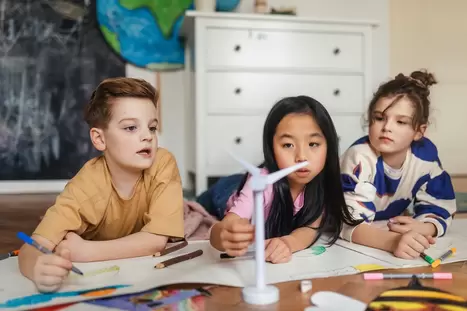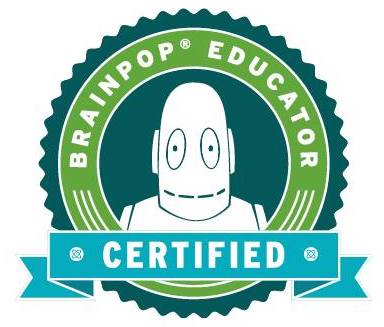|
Challenge-based learning (CBL) is a powerful tool that enables students to tackle personal, local, or global challenges while gaining knowledge across various subjects like literacy, math, science, technology, and the arts. Its core aim is to motivate students by connecting their learning to real-world problems, making their educational journey more meaningful and impactful.
One of the fantastic aspects of CBL is its flexibility. Unlike other learning models such as project-based learning, CBL can be implemented in classrooms of any size and duration. Whether you have just a single lesson or an entire school year, CBL can be tailored to fit your needs. The ultimate goal is to help students apply their learning to develop essential job and life skills, empowering them to tackle even larger challenges in the future. CBL can be seamlessly integrated into almost any subject at any time. Let's explore its key phases: Engage, Investigate, and Act. Engage Big Ideas: These encompass topics that are significant to your class, community, or the world at large. For instance, themes like Climate Change, Social Media Impact, the Purpose of Education, Democracy, or Artificial Intelligence can serve as starting points. The goal here isn't to pinpoint a specific problem but to brainstorm overarching ideas that encapsulate numerous smaller concepts. This approach helps students understand the complexity of challenges and encourages them to think critically. For example, when exploring Climate Change, students can delve into subtopics like global warming, deforestation, or plastic pollution in oceans. Embracing big ideas fosters diverse perspectives, allowing room for exploration without the fear of a wrong answer. Essential Question: This narrows down the focus to a specific area that students can explore. Essential questions are framed to be reasonable, achievable, and realistic, often starting with "how" or "how might we." For instance, in the context of Climate Change, an essential question could be: "How can we reduce the amount of Carbon Dioxide in the air?" or "How might we minimize our school's carbon footprint?" It's crucial for essential questions to be open-ended, avoiding single-solution scenarios, which could indicate a narrow scope. Challenge: This connects the big idea and the essential question, serving as the driving force behind the learning process. Challenges should be broad and extend beyond individual or team boundaries. For example, if the essential question revolves around reducing the school's carbon footprint, the challenge could be "To promote a healthy environment." Depending on the context, students may opt for a more localized challenge, such as "To construct an environmentally friendly school." Investigate Guiding Questions: Once a challenge is identified, students embark on a journey of exploration. The cornerstone of this phase is questioning, as it lays the groundwork for further investigation. Educators play a vital role in guiding students to formulate insightful questions. Depending on students' age and skill level, teachers may scaffold questions or provide examples to enhance students' questioning skills. Using the essential question as a compass, students delve deeper into the issue, posing inquiries that drive their research. For instance, when addressing the question "How might we build an environmentally friendly school?" students might ask: "What defines an environmentally friendly school?" or "What steps can we take to improve our current environmental practices?" To facilitate this process, educators can employ various techniques, such as timed tasks where students generate questions independently and then collaborate to refine them. Additionally, leveraging shared documents like Google Slides or Jamboard allows for community or expert input, enriching the question generation process. Activities and Resources: This stage involves creating a roadmap for addressing essential questions. Students brainstorm tasks and activities aimed at answering these questions. For instance, when exploring the concept of an environmentally friendly school, activities could include researching existing eco-friendly schools, identifying accreditation bodies, or reaching out to relevant organizations for insights. Educators may need to provide additional support, especially for younger students, in aligning tasks with essential questions. However, as students progress, they gain independence in navigating research avenues. Synthesis: Here, students consolidate their research findings into a cohesive narrative. Visual tools like infographics or spreadsheets aid in presenting information effectively. This phase not only facilitates knowledge synthesis but also serves as the foundation for the final phase—Act. Act Solution: Armed with comprehensive research, students design innovative solutions to address the challenge at hand. It's essential to emphasize the importance of creating solutions that are novel, feasible, and impactful. While encouraging creativity, educators should steer students away from overly simplistic solutions and encourage deeper exploration. For instance, instead of a conventional poster campaign to reduce waste, students could design a pedal-powered generator to illustrate energy consumption. This approach integrates additional skills like design and engineering, enriching the learning experience. Implementation: Once solutions are finalized, students transition to implementing their ideas within the community. Whether it's showcasing their projects at school events or soliciting feedback from community members, this phase emphasizes real-world application. Research indicates that students who teach others about their projects retain information better, highlighting the importance of effective communication and dissemination of solutions. Evaluation: The final step involves reflecting on the entire process. Students assess their journey, identifying areas for improvement and celebrating successes. Reflection can take various forms, including written journals, feedback forms, or video reflections. Additionally, articulating the CBL process reinforces learning, ensuring students internalize the value of each phase. The bottom line Challenge-Based Learning equips students with the skills and mindset needed to tackle complex real-world challenges. By fostering inquiry, innovation, and collaboration, CBL transcends traditional learning boundaries, empowering students to become active agents of change. Let's embrace the power of CBL in our classrooms and nurture the next generation of problem solvers and innovators! Comments are closed.
|
Time to reinvent yourself!Jason WoodScience teacher, storyteller and workout freak. Inspiring kids to innovate. Be humble. Be brave. Get after it!
|







 RSS Feed
RSS Feed